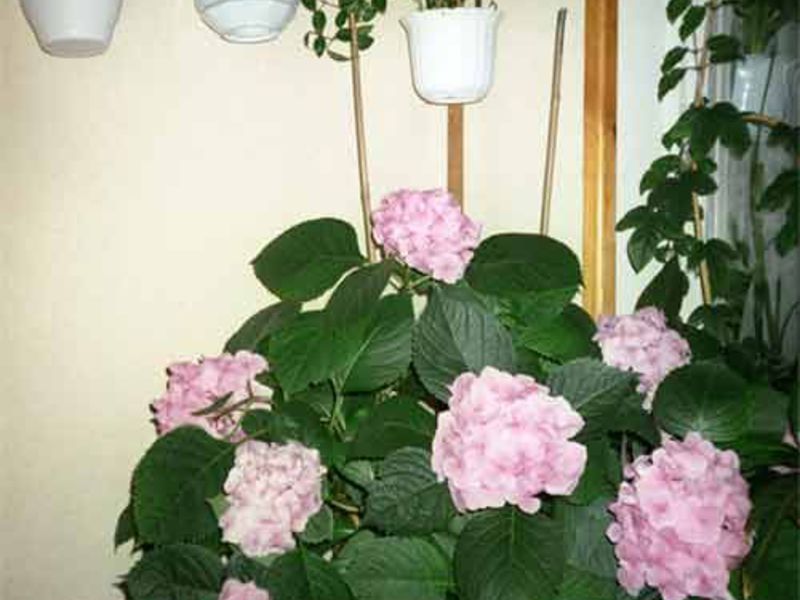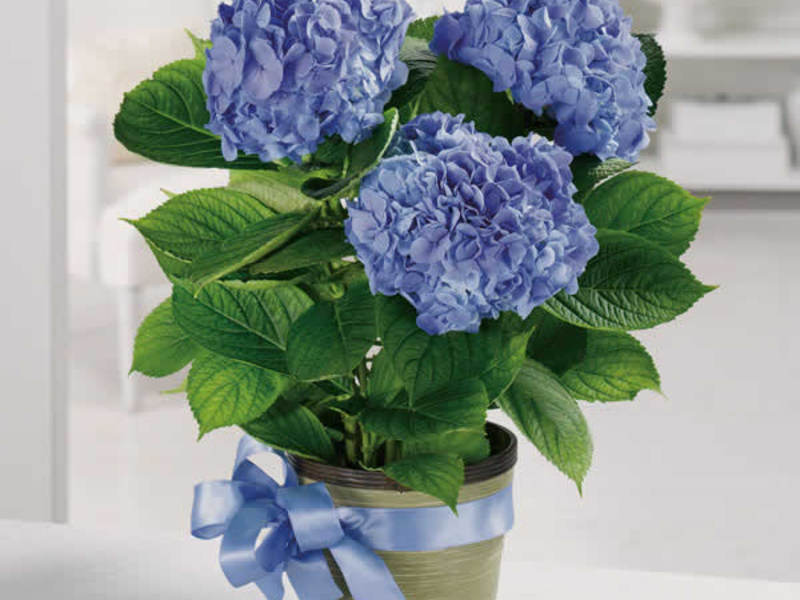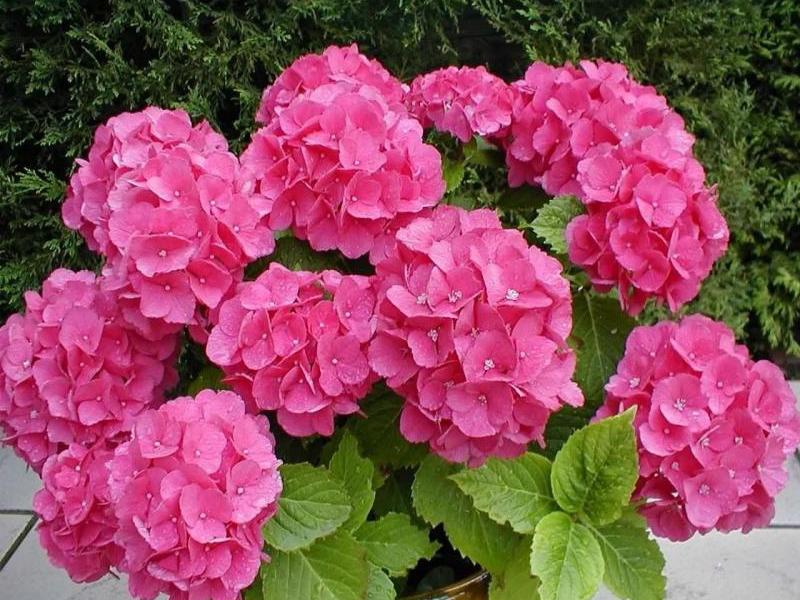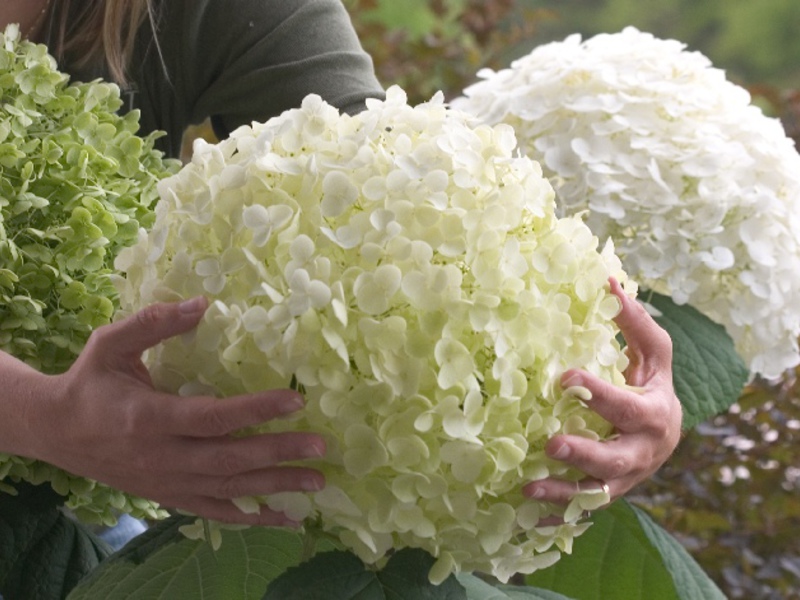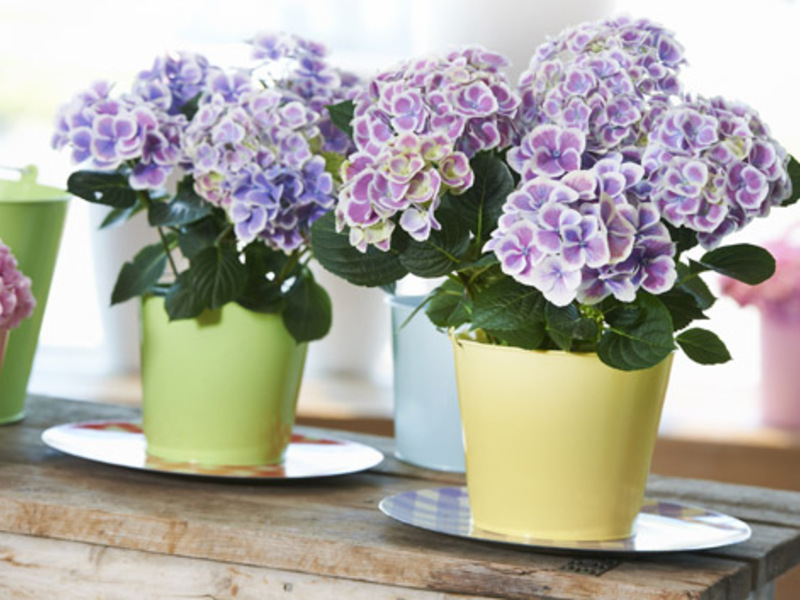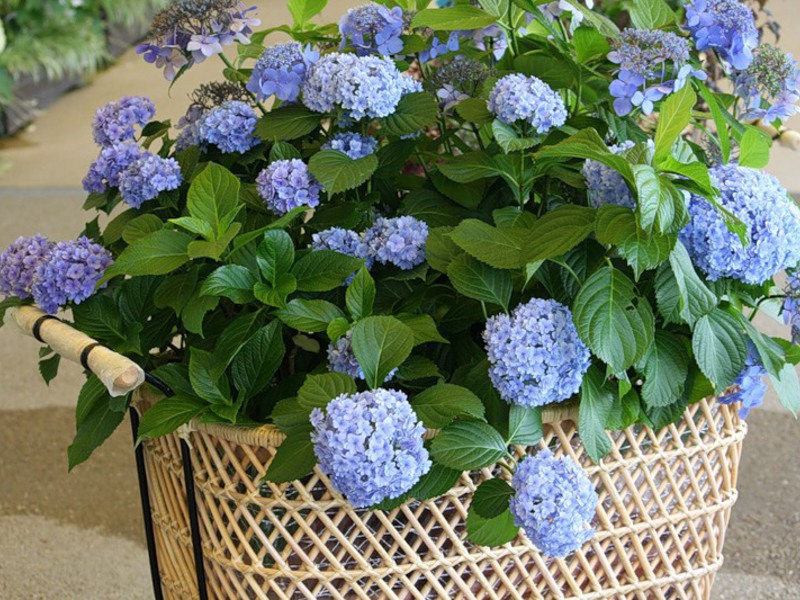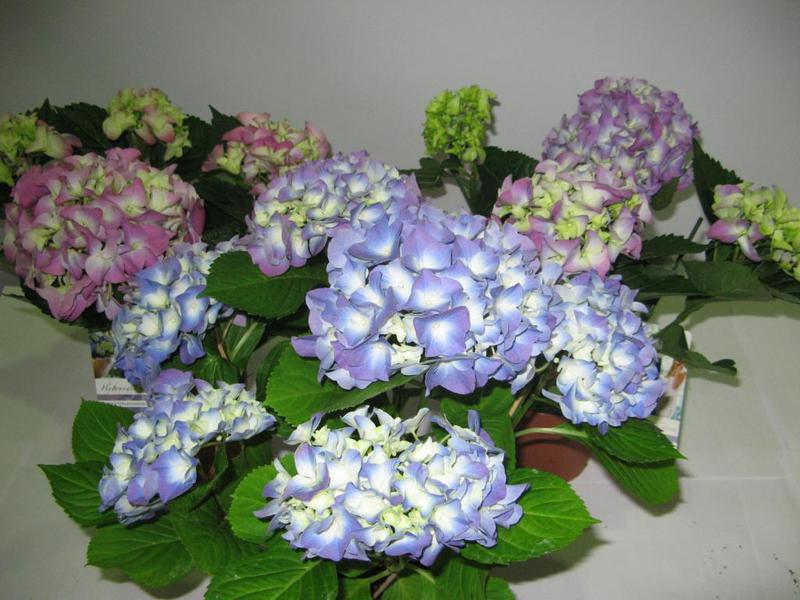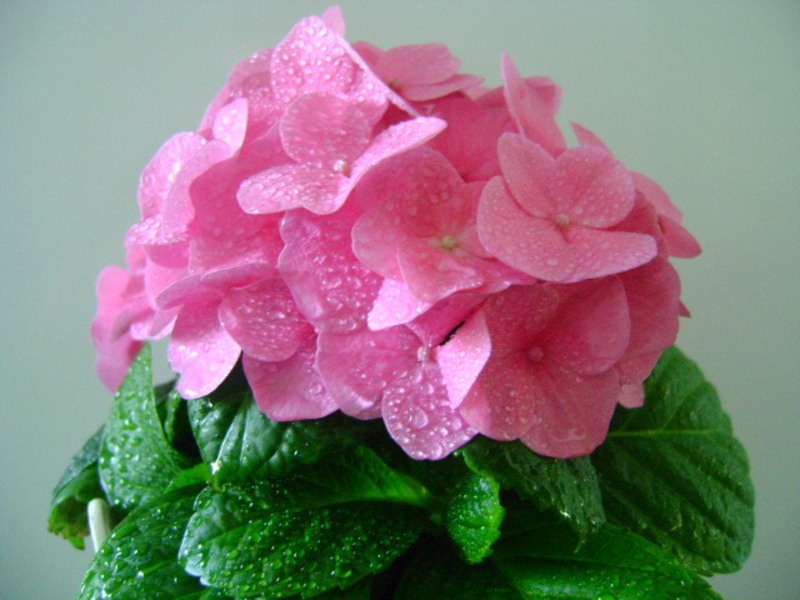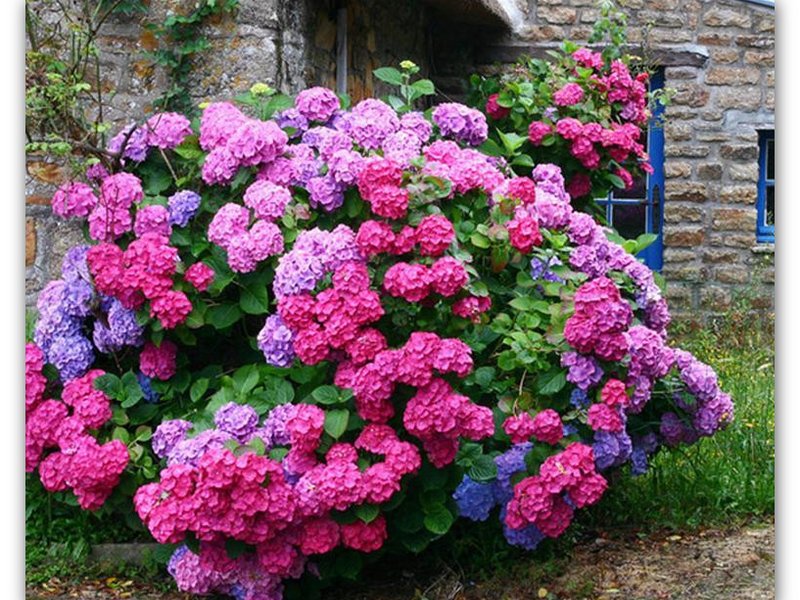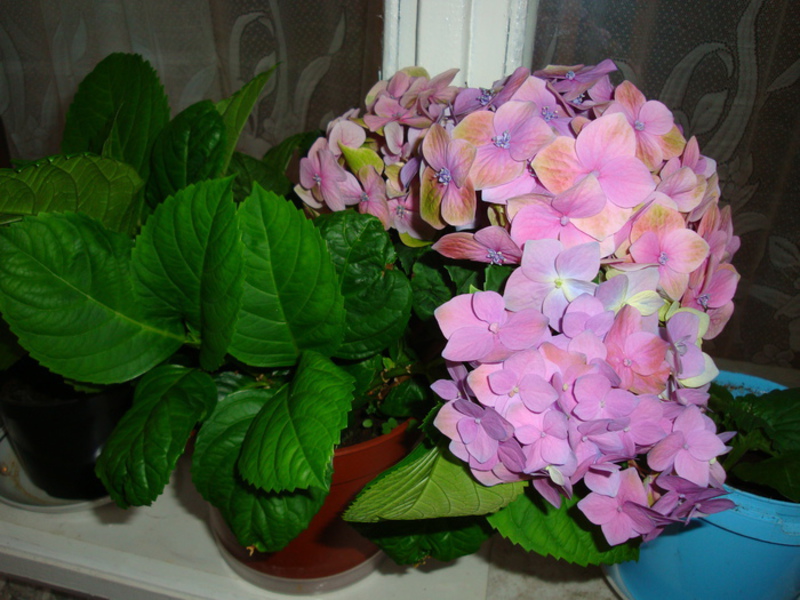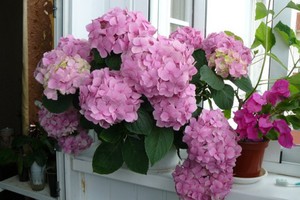 In many houses and on personal plots, you can see small shrubs, the lush caps of inflorescences of which conquer and captivate with rare pastel shades. This unique plant is called hydrangea. As a houseplant, hydrangea settled in European homes back in the 18th century. Since then, breeders have bred a large number of its varieties and varieties that never cease to amaze with their beauty.
In many houses and on personal plots, you can see small shrubs, the lush caps of inflorescences of which conquer and captivate with rare pastel shades. This unique plant is called hydrangea. As a houseplant, hydrangea settled in European homes back in the 18th century. Since then, breeders have bred a large number of its varieties and varieties that never cease to amaze with their beauty.
This is a favorite plant of many at home. requires specific care and certain growing conditions. That is why, before settling such an exquisite beauty in your house, you need to know how to care for hydrangea correctly.
Content
Decorative characteristics of hydrangea
Hydrangea is a flowering perennial shrub. The flower grows in the form of a compact multi-stem bush with beautiful, large, rich green leaves.
The plant can have two types of flowers - small fruiting and large sterile. Globular hydrangea inflorescences look like large hats... The color of the flowers can be pink, lilac, cream, pale white, light green. The color depends on the pH of the soil. Alkaline soil gives the inflorescences a pink and lilac hue, sour blue, and neutral white. The decorativeness and shade of the inflorescences are given by the sepals of the flowers, while the flowers themselves are colorless.
At home, with proper care, a plant can grow up to one meter. On one bush, a houseplant can have from 1 to 7 spectacular inflorescences, which are located above the upper leaves of the shoots. A blooming ball of hydrangea in diameter can reach up to 30 centimeters. The fewer inflorescences on the plant, the larger they are.
Indoor hydrangeas, in comparison with garden ones, are more compact, but their color intensity is higher.
The most popular varieties of indoor hydrangea
At home, only large-leaved hydrangea is grown in a pot, currently numbering more than 100 varieties.
Blue varieties:
- Ramars Mars - the bush is compact and inflorescences, the diameter of which is about 20 cm;
- Earley Blue is a tall plant with bright blue buds.
Varieties with red inflorescences:
- "Prima" is a mid-flowering variety with small flowers, inflorescences 15-18 cm in diameter and a stem height of 20-25 cm;
- "Red sensation" - the plant is distinguished by burgundy-red inflorescences, which, after adding aluminum sulfate or iron salts to the soil, become burgundy-purple.
Pink varieties:
- "Europe" - a tall (40-50 cm), profusely flowering bush with an inflorescence up to 25 cm across and large flowers with a diameter of 6 cm;
- "Hamburg" - a plant whose height is from 35 to 40 cm, blooms profusely with large flowers with a diameter of 4-5 cm;
- "Goliath" - the variety is distinguished by a bush height of 60-70 cm, sepals with deeply cut edges, dark pink large inflorescences and late flowering.
Varieties with creamy and white inflorescences:
- Souer Tharese is an early flowering plant with a low-growing bush up to 40 cm in height, inflorescences 15-17 cm in diameter and regular-shaped flowers;
- M - me E. Mouillere - differs in rather narrow leaves, flowers with 2-6 cm and inflorescences, the diameter of which is from 18 to 20 cm.
Hydrangea - home care
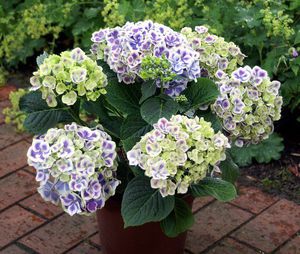 Hydrangea cannot be classified as an easy-to-grow indoor crop. The plant is demanding not only on the conditions of detention, but also on strict adherence to certain rules for its care. This spectacular, but capricious flower does not forgive negligence and mistakes.
Hydrangea cannot be classified as an easy-to-grow indoor crop. The plant is demanding not only on the conditions of detention, but also on strict adherence to certain rules for its care. This spectacular, but capricious flower does not forgive negligence and mistakes.
The hardest thing to follow and maintain cyclical development hydrangea in a pot. The flower must be carefully taken care of at the stage of bud formation, and carefully monitor the wintering conditions.
Hydrangea is a deciduous shrub whose foliage does not survive even at room temperatures. During the dormant period, the plant sheds its leaves. At this time, he needs to provide a cool place and adjust watering and feeding. This period lasts in the winter season for two and a half months. In the spring, the plant begins to grow actively.
Lighting for hydrangea at home
The plant's lighting requirements are the same for both the garden and indoor conditions. Hydrangea prefers a bright place protected from direct rays. It is best to arrange a flower with a pot two or three meters from the south window... Direct rays of the sun will cause loss of decorative effect on the leaves and endanger flowering.
The light intensity of the hydrangea should not change throughout the year. Reducing light during the winter period of time can have a detrimental effect on the flower. Therefore, the plant must be rearranged to a brighter place, or used to increase daylight hours fluorescent lamps. A plant that lacks light in winter will weaken, become vulnerable to pests and diseases, and lose its decorative effect.
In addition to good lighting, indoor shrubs love fresh air. Therefore, the room must be regularly ventilated without creating drafts. In summer, hydrangeas in pots feel most comfortable on balconies and loggias with shading, on terraces and in cool places in the garden.
Temperature and humidity
Indoor hydrangeas need cool conditions. For many years, they will delight with their flowering only in a room where the air temperature does not exceed + 20C.
In the winter period, when the plant is at rest, one should also remember to take care of it. At this time of the year, the temperature range should be from + 4C to + 9C. This indoor culture can even hibernate on a glazed balcony or loggia. In this case, the shoots will need to be cut by two-thirds, the plant should be covered with spruce branches, and wrapped in non-woven material. It's okay if the shoots still freeze in winter. After pruning, the plant will quickly recover, begin to grow foliage and bloom.
Its green leaves indicate that the temperature is comfortable for hydrangea. If the flower starts dropping them, it means that the room is too warm for it.
In addition to cool conditions, hydrangea requires high humidity. For this you can buy a humidifier, or place a saucer or pallet with wet moss and stones next to the pot.
Watering and feeding hydrangeas
The plant belongs to a moisture-loving culture, therefore, during the entire active growth, it must be watered often and abundantly, while observing some rules.
- The soil around the roots should be moist at all times, but its top layer should be well dried before watering. In this case, the roots will not rot and the plant will not get sick.
- During the rest period, the frequency of watering is gradually reduced.In the winter season, you just need to make sure that the earthy clod does not dry out.
- As soon as new leaves begin to appear on the bush, watering also gradually resumes.
- It is recommended to water the plant with soft, settled water at room temperature.
Summer hydrangea fed with mineral fertilizers... Twice a week, the flower is watered with a solution prepared from 30 g of potassium sulfate, 40 g of superphosphate, 30 g of ammonium nitrate. All prepared ingredients are mixed and dissolved in a bucket of water.
From mid-August, feeding stops. At this time, the vegetative growth of the plant will begin to stop and flower buds will be laid. Weak shoots and root growth will need to be removed.
Features of transplanting room hydrangea
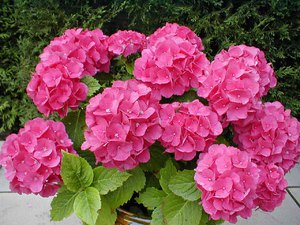 Hydrangea care at home involves a yearly transplant. The soil should be taken fertile, consisting of sod, leafy land and sand (3: 3: 1).
Hydrangea care at home involves a yearly transplant. The soil should be taken fertile, consisting of sod, leafy land and sand (3: 3: 1).
Since the root system of the plant is horizontal, it is recommended to select a wide and spacious pot for it. In order not to damage the roots and minimize stress, the flower is transplanted by the transshipment method.
A thick layer of drainage should be laid on the bottom of the pot, then a layer of earthen mixture, on which the prepared plant is installed. Fresh substrate is poured around the roots so that the root collar with the soil surface is at the same level.
After transplanting, the hydrangea must be well watered, and the soil must be covered with peat mulch on top. This will prevent moisture from evaporating quickly.
Breeding methods for home hydrangea
At home hydrangea can be propagated in three ways:
- By dividing the bush.
- Seeds.
- By cuttings.
Dividing the bush
This is the easiest breeding method, which requires great care and adherence to some rules:
- the bush divides during the annual transplant;
- all shoots must have a sufficient number of roots and a growth point;
- shoots and roots of the cuttings are first shortened, and only then are they planted in pots and watered.
Divided and planted in spring, the bushes will take root well by autumn.
Seed propagation
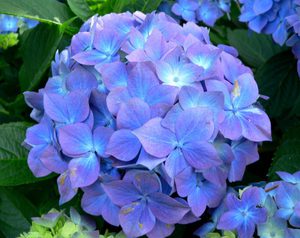 Seed indoor hydrangea breeds at the end of winter... Sowing soil should consist of humus, turf and leafy soil (1: 1: 1). The seeds are sown over the surface of the earthen mixture. They do not need to be embedded in the soil. The inoculated container is covered with foil or glass on top.
Seed indoor hydrangea breeds at the end of winter... Sowing soil should consist of humus, turf and leafy soil (1: 1: 1). The seeds are sown over the surface of the earthen mixture. They do not need to be embedded in the soil. The inoculated container is covered with foil or glass on top.
Crops should be ventilated and moistened with a spray bottle every day. Make sure that the soil is always slightly damp. When the first shoots appear, the film or glass is removed.
As soon as two real leaves appear on the seedlings, they need to be transplanted into a deeper container with the same composition of the earth. The grown and matured seedlings are planted in pots, the diameter of which should not be more than seven centimeters.
Hydrangea cuttings
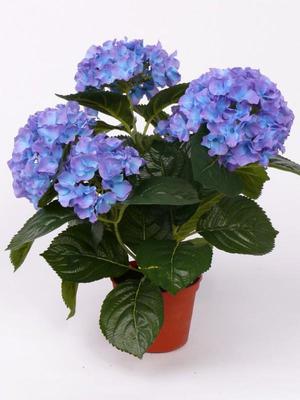
Experienced growers propagate hydrangea by cuttings, since it the most reliable way to reproduce.
In January-February, cuttings 7-8 cm long are cut from the root shoots of the plant. Each segment should have up to three internodes. On the upper part of the cutting, the leaves are shortened by a third or half, and completely removed from the lower part.
The segments are treated with a root stimulator, planted in a sandy-peat substrate, watered and covered with glass jars. This way of keeping them will help prevent the soil from drying out, and will maintain the optimum air humidity for the development of cuttings.
The container with seedlings should be kept in the brightest place at room temperature 18-20C. After three to four weeks, the cuttings will take root and can be planted in separate pots.
From cuttings rooted in January-February by autumn a bush will grow from 3-4 shoots... If grafting is carried out in March-April, the result will be a hydrangea with one stem.
Only caring owners who follow all the rules of care and requirements for temperature conditions, soil selection, lighting and watering will be able to observe the luxury of hydrangea blooming. But the care is worth it. After all, this beautiful plant will look fresh and fashionable in any setting and in any interior. It can be used to decorate residential and industrial premises, winter gardens, balconies, terraces and flower beds.


